Mammals : Primate Evolution driven by Cosmic Events, Climate Change, Food Sources, Ecological Habitats, and Infectious-Symbiotic Speciation Events.
..............
see A Molecular Phylogeny of Living Primates
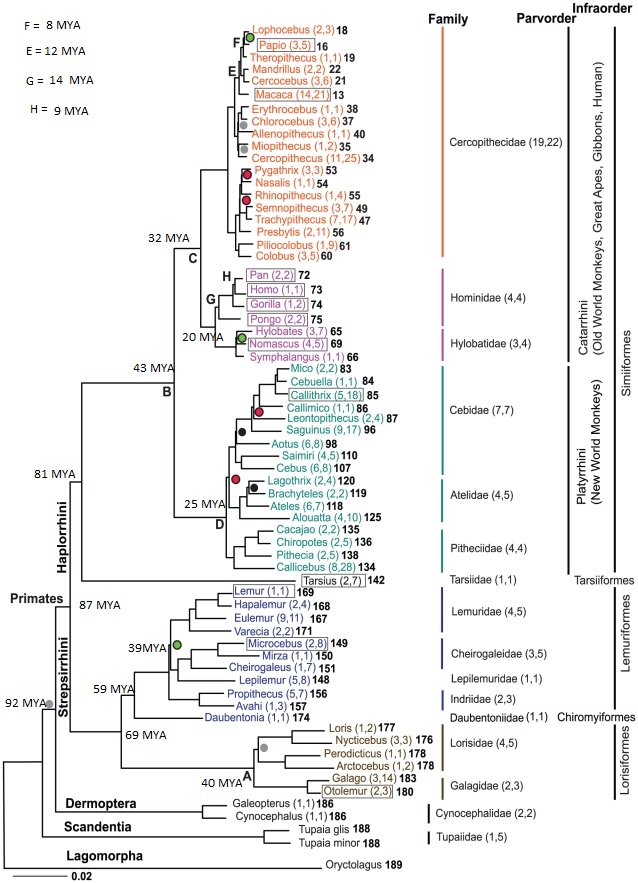
The Closest Living genetic relatives to the Primates are the Dermoptera (Colugos). Adapisoriculids and Pleisadiformes are extinct clades that preceeded or interceded these current mammalian orders.
Adapisoriculids are postulated to be the earliest Euarchotans. They share features with Dermopterans and Pleisadiformes. Deccanocetes is a primitive member of this group and the closely related (Remiculus deutschi -France 55.8–58.7 Ma) shares more features with the dermopterans. It has been hypothesized that this group radiated in the subcontinent of India and expanded into East Africa, then North Africa and Europe. It is possible that they evolved into Dermopterans while in France and then migrated to the HoloArctic Area during the PETM . Subsequently they evolved into the plesaidiformes and primates after migrating to North America and Asia .
Early primate groups diversififed in China and subseqeuntly migrated back into Africa and possibly rafted into South America.
Representative Pleisadapid/Euarchonta include:
Chiromyoides campanicus.(France)
Plesiadapis tricuspidens (France)
Haplorrhini (including tarsieriform and extinct omomyids) and Strepsirrhini ("wet-nosed" primates- lemurs and lorises and extinct adapids), parted ways about around 65 million years ago (mya).
Platyrrhines (new world monkeys ) evolved from Haplorrhines around 38 million years ago
Catarrhines (Old world monkeys and apes ) evolved from Haplorrhines about 25 million years ago
Pergatorius -Montana Ate the Fruit evolved at least 65-66 Ma or as much as 92 Ma probably an stem pleisadiform.
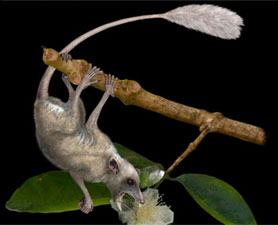
Altiatlasius--Morroco possible stem Haplorrhine-Simiform. 37 Mya
Notharctus --Adapiform/lemur-lorise like ..Wyoming. near Strepsirrhine/Happlorrhine branching
Darwinius masillae -Germany.. Mid Eocene.. Happlorrhine ? or Strepsirrhine ?
Afrotarsius -Egypt
Teilhardina- Wyoming.. omomyid like/tarsier (originated in Asia (T. asiatica) and dispersed westward to Europe (T. belgica) and then to North America (T. brandti and T. magnoliana) during the earliest Eocene Paleocene–Eocene Thermal Maximum) .. shows evidence of fingernails . Ancestor may be
Archicebus Achilles - a stem Tarsieriform and close to the branching of Simiformes about 57 Million years ago.
Tarsiers -South East Asia
The Haplorrhines Diversified into New World Platyrrhines and Old World Catarrhines (Old World Monkeys, Apes, and Humans)
Eosimias 42-45 Million Years Ago- Haplorrhine Anthropoid/Simiform may be the stem ancestor to all monkeys and apes
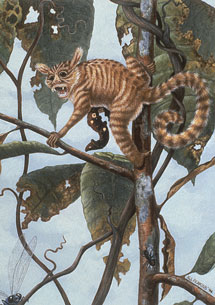
Algeripithecus and Tabelia / Parapithecines in Northern africa although evidence suggests that Algeripithecus is a Strepsirrhine primate.
Marmosets - New World Monkeys.
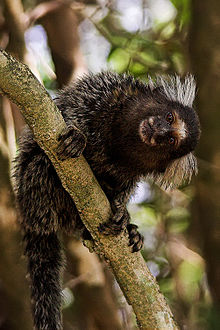
Old Word Monkeys Maccaca--
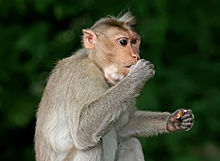
Gibbons
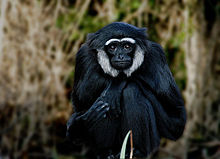
Proconsul --25 Ma
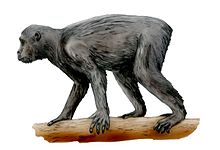
Orangatangs
Gorrillas
Chimpanzee lineage and the Ardipithecus lineage that lead to Homo Sapeints
Chimpanze--
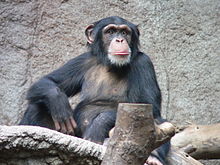
References
From Purgatorius ceratops to Homo sapiens
Primate Evolution and Human Origins
Endogenous Retroviral Integrations in relation to Primate Evolutionary Events